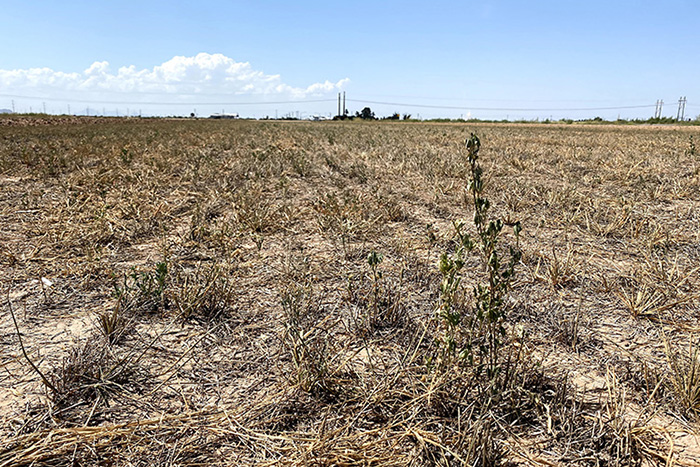The Great Drying: The End Of The American Southwest?

Nancy Caywood is a fifth-generation farmer. With her son, Travis, she grows alfalfa and cotton in Arizona’s Pinal County, located between Phoenix and Tucson. She walks across a dry, nearly barren field. With each step, alfalfa crunches beneath her boots. “Everything is dead out here,” she says.
The Caywood farm is just one of many that are facing the possibility of shuttering their operations as the federal government begins to ration water from the Colorado River. This is unprecedented but necessary if the two major reservoirs on the Colorado River – Lake Powell and Lake Mead – are not to run dry.
The problem facing the farmers in Pinal County is a twenty-year long drought. When droughts last for decades, they are called megadroughts. They are not new to this region. In the last 2,000 years there have been four other megadroughts in the Southwest – in the 800’s, the 1100’s, the 1200’s, and the late 1500’s. The megadrought in the 1200’s was the worst, killing perhaps half of the indigenous population. In the region. The past two decades have been the driest since that megadrought.
During past megadroughts, only small populations were affected. In the 20th century, world population exploded, and the water of the Colorado River was harnessed by a series of dams to meet the growing demand. The river now supplies water and electric power to 25 million people. The consequences of a megadrought today will therefore be considerably worse.
While megadroughts are natural phenomena, climate scientists have determined that global warming has made this megadrought twice as bad as it would have been without it. Yet the most recent United Nations Climate Change Conference (COP 26), held in Glasgow last November, has had no more impact than many previous UN climate conferences. According to climate scientists, the commitments made fall far short of what is needed to reduce fossil fuels in any meaningful way. Without a rapid and drastic reduction, the Earth will warm ever faster.
There is another factor that has worsened the crisis. It goes back to the first Colorado River Compact, signed in 1922 that determined the allocation of the river’s water among the states in the lower Colorado River Basin (Arizona, California, and Nevada). Climate scientists have since determined that the first two decades of the 20th century were unusually wet. Planners at the time did not know this, so they overallocated the river’s water. It is true that the current crisis is due to a diminishing supply of water (the Colorado River flow decreased by 20 percent during the 20th century), but it is equally due to the chronic removal of water at a rate faster than it is replenished.
Eighty-five percent of the water drawn from the Colorado River is used for irrigation. The other 15 percent is used by municipalities, businesses, and homeowners. This means that the government can buy time for the people who live here by reducing the allocation of water to agriculture, which is what is putting the future of Nancy Caywood’s farm in jeopardy. But unless the world becomes more serious about reining in greenhouse gases, the Southwest will become ever more parched.
